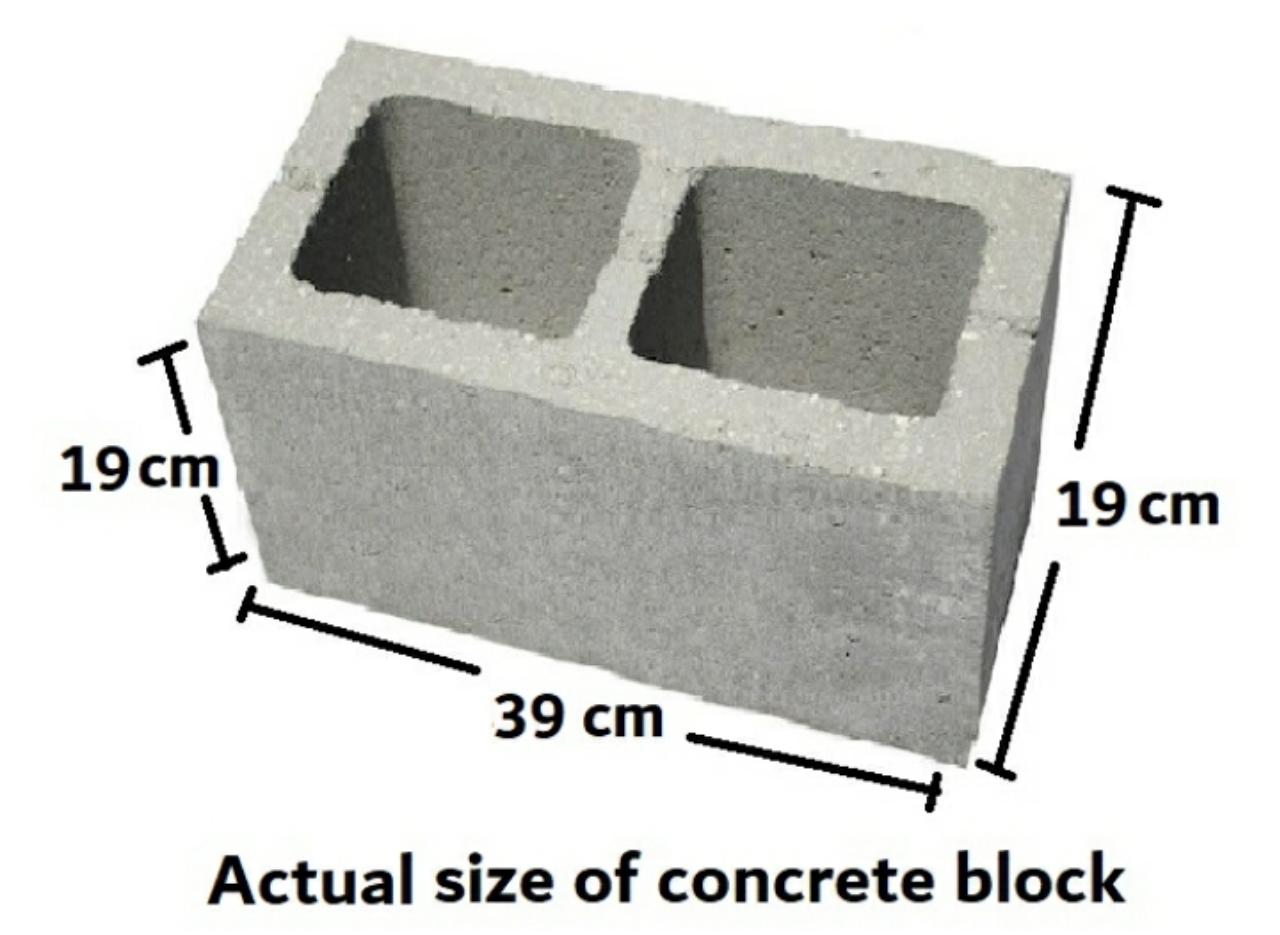
Concrete block dimensions in cm CivilHow
Typically, concrete masonry units have nominal face dimensions of 8 in. (203 mm) by 16 in. (406 mm), available in nominal thicknesses of 4, 6, 8, 10, 12, 14, and 16 in. (102, 152, 203, 254, 305, 356, and 406 mm). Nominal dimensions refer to the module size for planning bond patterns and modular layout with respect to door and window openings.

Concrete Masonry Units
Concrete masonry produced with the RainBloc® Integral Water Repellent System resists wind-driven rain while still maintaining vapor transmission, reducing the chance of mold, mildew, and musty smells from developing inside a building. RainBloc® for Mortar is a liquid admixture used at the masonry construction site to make mortar.

14043_210_1.jpg (670×644) Concrete masonry unit, Concrete block
It will cover 500 square feet with these sizes. 10 \times 50 = 500. A single 16″ × 8″ concrete block has a surface area of 128 square inches, therefore you'll need 563 concrete blocks. 00 \; ft^2 \div 128 \; in^2 = 72.000 \; in^2 \div 128 \; in^2= 562.5. You will pay $844.5 if one cinder block costs $1.5.
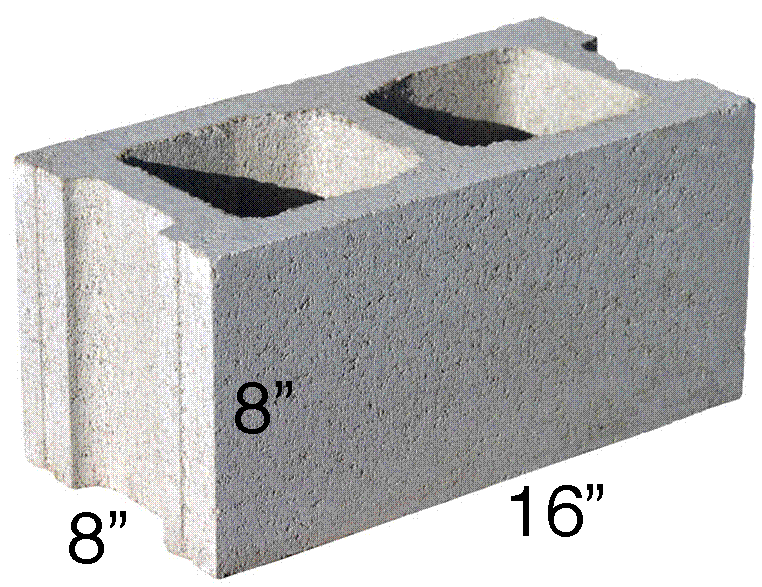
concreteblockdimensions Inch Calculator
About Concrete Block Engineers. Concrete blocks are sustainable, flexible and versatile and can be used to build everything from trench silos and retaining walls to structural walls and road barriers.. The maximum fill height of such structures depends on several factors, including wall width and the type of material stored. We work for.
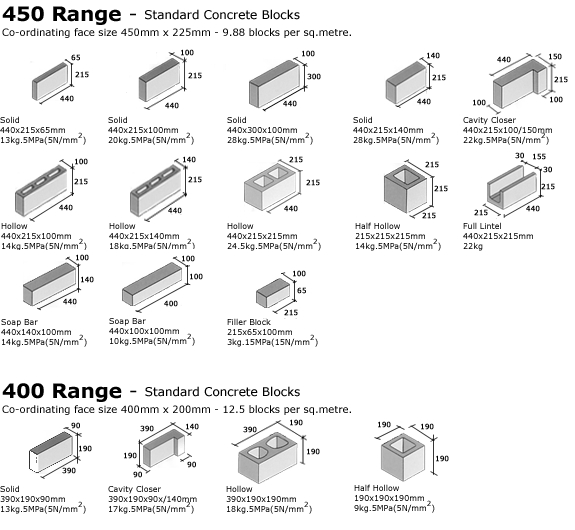
Zyngers Blog concrete block sizes
Block & Brick Dimensions. Whether you're a mason, landscaper, engineer or a homeowner, rely on the charts below to help you quickly and conveniently reference technical information related to our blocks and bricks. For additional technical information, visit the Tech Bulletins offered by the National Concrete Masonry Association.

Standard Concrete Block Sizes Concrete blocks, Concrete block sizes
Concrete Block are commonly referred to as "CMUs" (Concrete Masonry Units), "Grey Block" or simply "Concrete Block." The following are key terms commonly used to further describe different types of concrete block. A. Scored/Concave Flute B. Stretcher End (Mortar Groove) C. Breaker D. Sash Groove E. Plain End F. Rectangular Core G. Pear Core
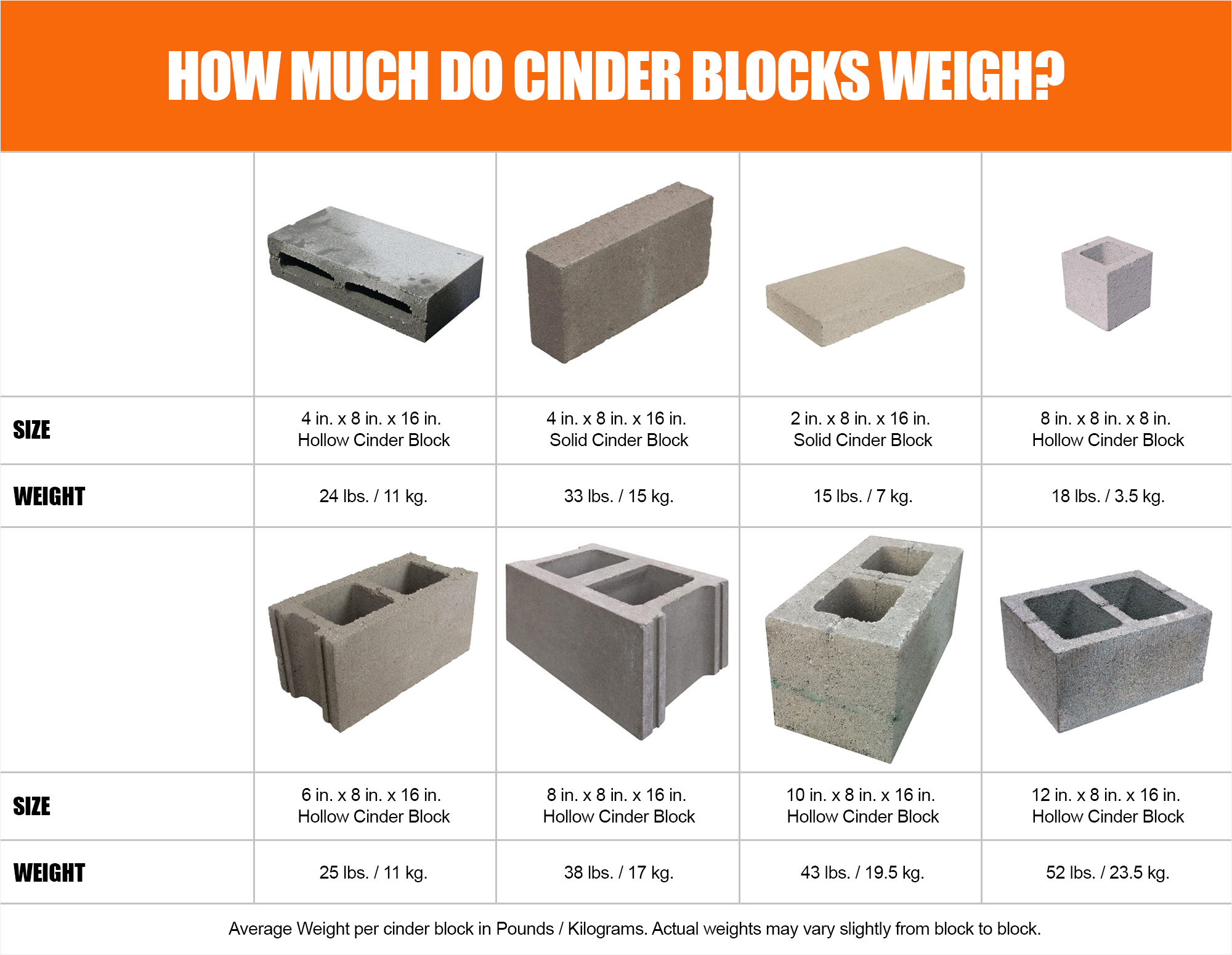
How Much Do Cinder Blocks Weigh?
Concrete blocks, sometimes called Concrete Masonry Units (CMUs), are standardised dried concrete blocks that can be used within construction much like clay bricks, with mortar bonds between each join.

Concrete Block Sizes What Are The Different Dimensions?
The 'nominal' dimension is the size of the block including the thickness of the mortar joint, while the 'actual' dimension is the physical size of the block itself. For example, a CMU block described as 8" x 8" x 16" (nominal dimension) will actually measure 7.625" x 7.625" x 15.625". Common CMU Block Sizes
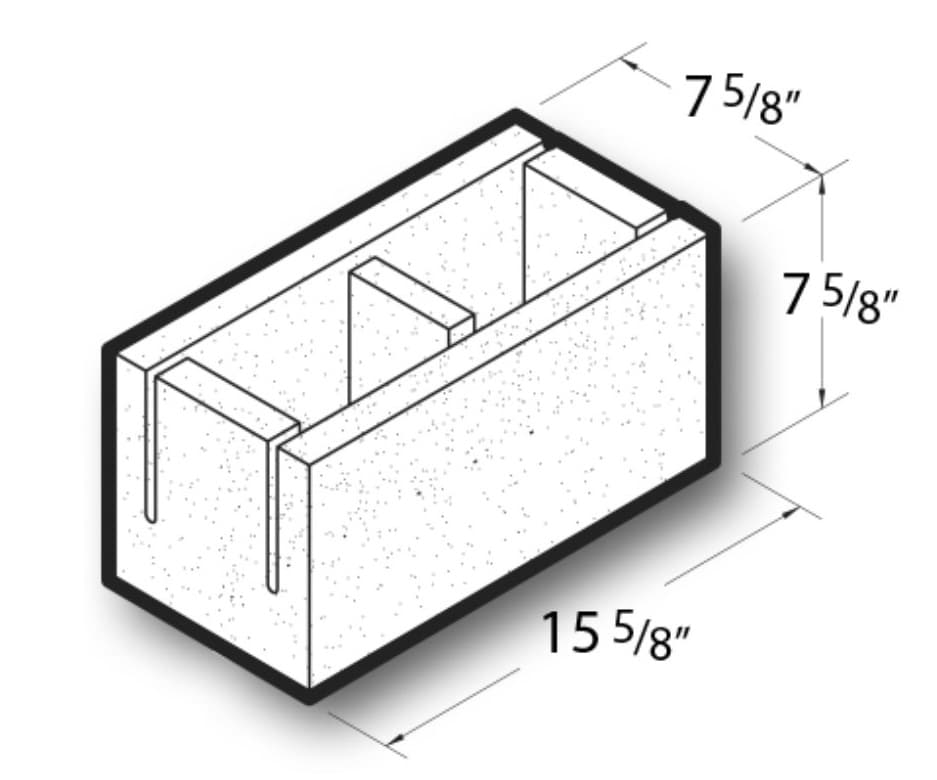
Standard Concrete Block Dimensions lupon.gov.ph
Concrete masonry units (CMU) are used in virtually every type of building construction. Standard block are common in the load bearing walls of buildings. While the most common sized block is 8 in. x 8 in. x 16 in., they are available in a variety of sizes and are categorized by block width.
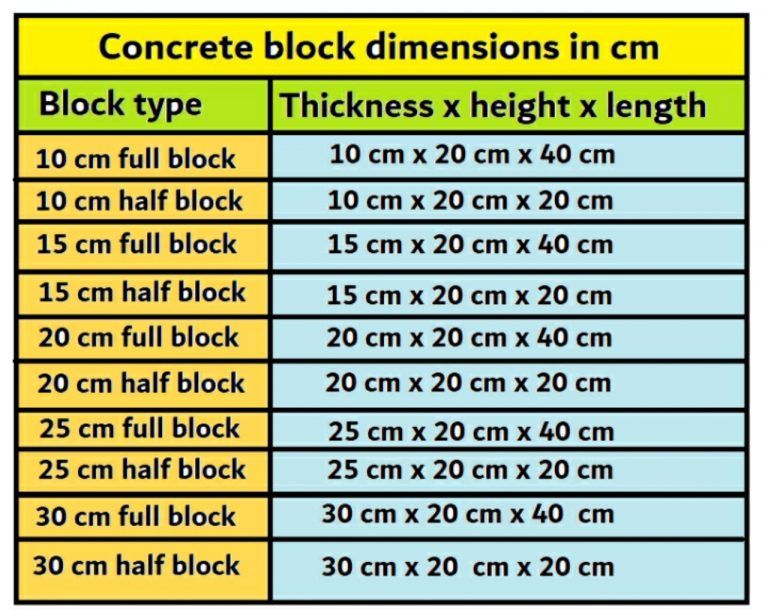
Concrete block dimensions in cm CivilHow
The actual measurement and the width of the mortar joint make the nominal dimension of a CMU. Mortar joints of CMU are typically 3/8″. The other construction materials follow the nominal dimension within a 4″ grid. Usually, little faces of CMUs are 8 inches by 16 inches, accessible in a nominal thickness of 4, 6, 8, 10, 12,14, and 16 inches.

Concrete Blocks Ducon Concrete Ltd Concrete Built is Better Built
Input the dimensions of the concrete block wall you're building, that is, its width and its height. They are needed for determining the wall's square footage. Decide whether you want to choose a preset block size, or input a custom one :

GTCnCMU / Nominal Vs Actual Standard Sizes for Concrete Blocks
How to Decipher the CMU Number The CMU has actual and nominal dimensions, just like red clay bricks. The nominal dimension is the actual dimension of the concrete brick with the width of the mortar joint added. The average mortar joint for a CMU is 3/8 inch.

Masonry Viblock We make beautiful concrete products
There are three classifications of CMU: lightweight (less than 105 lb/ft 3 ), medium weight (between 105 lb/ft 3 and 125 lb/ft, and normal weight (more than 125 lb/ft 3. Lighter CMUs are less expensive, require less labor to install, and tend to have better fire resistance properties.

What Size Is A Concrete Block
The concrete block — hollow (open or closed cavity) or solid shall be referred to by its nominal dimensions. The nominal dimensions of the concrete blocks are given below: Length : 400, 500 or 600 mm Height : 200 or 100 mm Width : 50, 75, 100, 150, 200, 250 or 300 mm
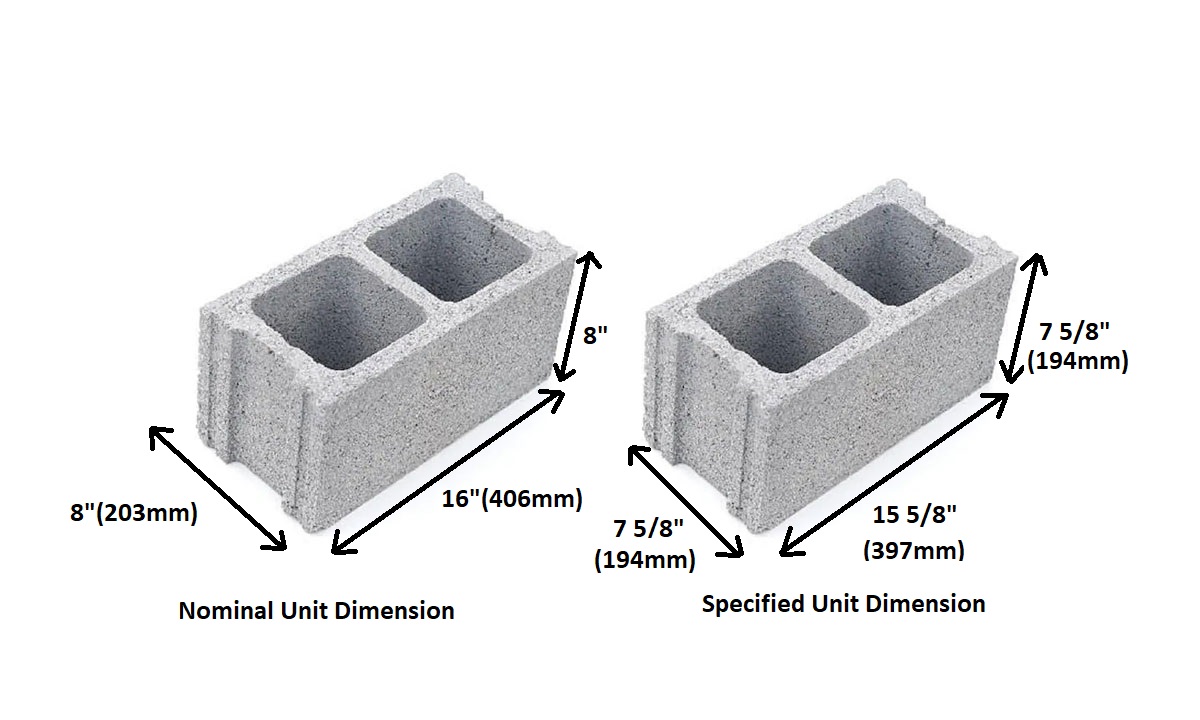
Cinder Block Dimensions based on ASTM Standards Civil Gyan
Masonry Blocks - Dimensions Engineering ToolBox - Resources, Tools and Basic Information for Engineering and Design of Technical Applications! Masonry Blocks - Dimensions Concrete Masonry Unit Blocks (CMU) - dimensions. Sorry to see that you are blocking ads on The Engineering ToolBox!

Concrete Block JLC Online
Cinder Block and CMU Size Chart Standard CMUs can also vary in width. In addition to the most common 8 in. width, cinder blocks can also have 4 in., 6 in., 10 in. and 12 in. widths. For larger projects such as foundations and load-bearing walls, a larger width CMU more easily fills with concrete once the structure is built.